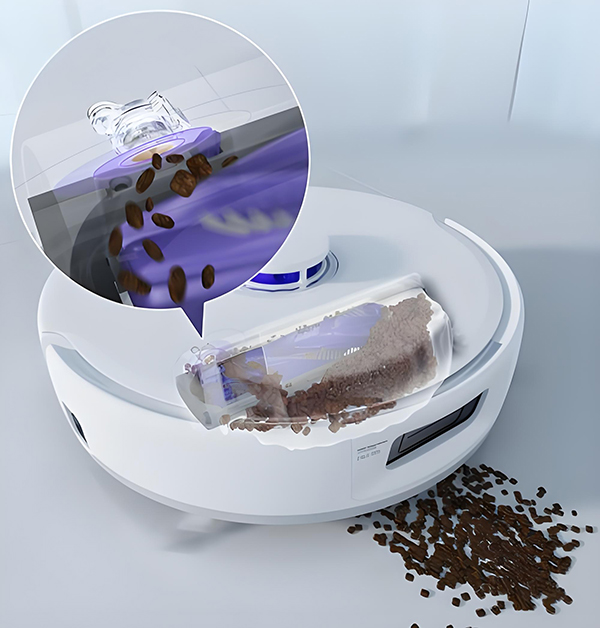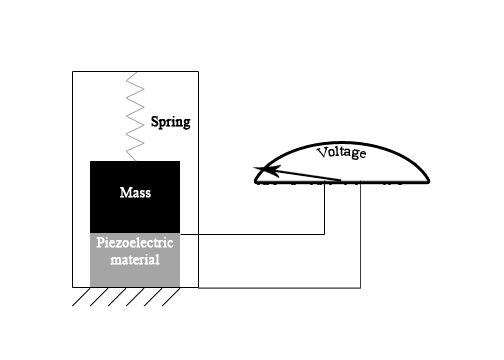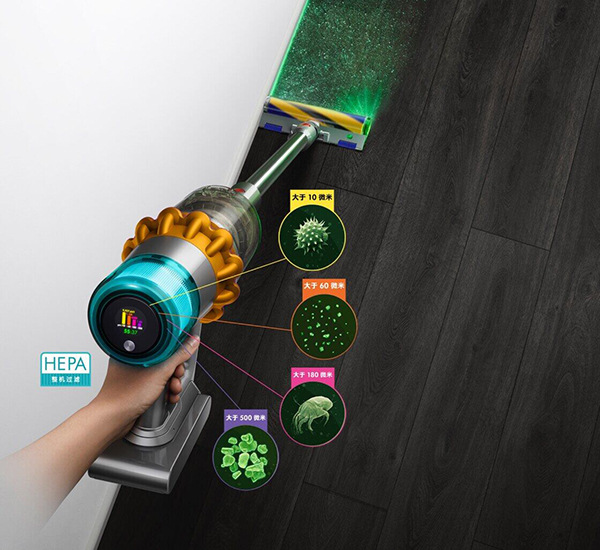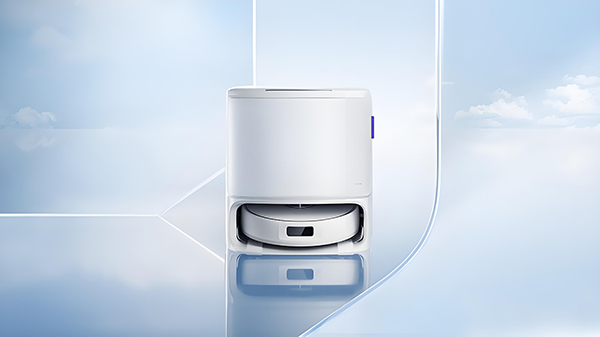The sweeping robot industry is refocusing on the actual needs of users, and scientific cleaning technology has once again become the focus of competition in the industry.

At present, many brands are actively introducing Solid Particulate Matter Cleaning Technology, ‘leaders’ using high-precision particulate matter Sensor sensors as the core of the intelligent sensing system, successfully achieved the millimetre or even micron-level particulate precision cleaning. The application of this innovative technology is rapidly expanding in the field of intelligent cleaning equipment, reflecting the industry's firm pursuit of scientific cleaning concepts and continuous exploration.
Intelligent particulate matter sensing system: Autonomous recognition, intelligent adjustment
The particle matter sensing system in intelligent cleaning devices is equipped with highly accurate sensors that quickly recognize the size and degree of contamination of particles on the floor. Relying on the precise data provided by these sensors, the robot is able to intelligently adjust its travelling speed as well as the rotational speed of the roller brush and side brushes, and at the same time proactively adjusts the suction power to ensure that even the most hidden corners can be thoroughly cleaned. This meticulous cleaning provides a more thoughtful cleaning experience for the user.

Principles of identifying particulate matter
When particles are drawn into the airway by the sweeper, their contact with the airway wall triggers the built-in piezoelectric ceramic particulate matter sensor. The sensor converts the mechanical vibrations caused by the impact of the particles into electrical signals, i.e. voltage changes. By carefully analysing the amplitude and frequency of these voltage signals, the robot's main board is able to accurately identify the size and quantity of the particles.

Several smart cleaning equipment brands have adopted this intelligent monitoring system for particulate matter based on the piezoelectric principle, and it is evident that the use of the piezoelectric effect to detect solid particulate matter may become an important technological application in the industry.
Expansion: Accuracy is down to the micron level
Cleaning tiny particles that are difficult to detect with the naked eye is a challenge that relies on the ability of high-precision sensors to recognize them. Currently, particulate matter sensors are recognizing particles at the micron level, enabling cleaning equipment to detect inhaled particles at a frequency of 15,000 times per second. These sensors are able to monitor and count particulate matter of different sizes in real time and present the relevant information as a graph on the display or app of the application device.

In household cleaning, common particles can be classified into four categories based on their size: those larger than 10 microns (e.g. allergens such as pollen), those larger than 60 microns (e.g. fine dust, dander), those larger than 100 microns (e.g. dust mites, fine sand) and those larger than 500 microns (e.g. granulated sugar, fleas). Cleaning devices equipped with micron-level recognition accuracy particulate sensors enable users to visualize the dust situation in their homes and clean effectively accordingly.
Millimetre particle identification for floor cleaning needs
For floor cleaning, sweeping robots with millimetre particle recognition can also have the ability to see details beyond the human eye, enough to cope with daily cleaning needs.
A senior reviewer shared his feelings after using a sweeping robot with this function: the reviewer used to open the windows of the balcony to ventilate, but it happened that the balcony corresponds to the downstairs of the recent construction activities, after a few days, the balcony floor has a layer of invisible dust, however, the sweeping robot with its equipped high-precision particulate matter sensors, can automatically identify and assess the cleaning condition of the balcony, intelligently determine it as a ‘heavily soiled area’ and take appropriate measures to repeat the cleaning. However, with its high-precision particle sensor, the sweeper can automatically identify and assess the cleaning condition of the balcony and intelligently judge it as a ‘heavily soiled area’ and take repeated cleaning measures accordingly.
Previously, the reviewer was not even aware of the fact that there was already a lot of dust on the balcony, as the dust was difficult to see with the naked eye from a normal overhead angle. The intelligent sweeping robot, which has the ability to sense small particles, was able to recognize, make decisions and clean the balcony on its own, ensuring a clean and hygienic living environment.
More results in action
Although the application of particle recognition technology in the field of sweeping robots is still rare, it has already aroused the keen interest of many technology enthusiasts. On a certain platform, a user who is keen to try out the new technology shared his experience, demonstrating the excellent performance of a sweeping robot equipped with a high-precision particulate matter sensor in actual use.
With its built-in particulate matter sensor, the robot is able to keenly identify dense cat litter and other particulate matter on the floor in simultaneous sweeping and mopping mode. Once such material is detected, the robot delicately lifts the mop and automatically switches to single-sweep mode, thus avoiding unnecessary contact between the mop and the particulate waste and reducing the risk of potential scratches to the floor.
When the robot performs a bow sweeping task and the sensors detect a high density of particles on the ground, it automatically makes a series of fine adjustments: it reduces the travelling speed to minimise disturbance to the particles, it retracts the side brushes to prevent particles from being accidentally knocked away, and it temporarily boosts the suction power to ensure that these fine particles are effectively removed.
Particulate Matter Sensor
Particulate matter sensor is a smart sensor product developed specifically for cleaning equipment to achieve particle monitoring. When the cleaning equipment (such as sweeping robots, hoovers, scrubbers, etc.) equipped with this product is turned on, particles enter the equipment, using the inverse piezoelectric effect to make the piezoelectric oscillator inside the sensor deformation, combined with AI algorithms, you can calculate the size of the particles at the cleaning place through the degree of deformation, density, etc., to provide an intelligent sensing basis for the upgrading and iterating of the intelligent cleaning equipment.
- Use of piezoelectric induction technology, fast sensing speed, low power consumption
- Strong pressure capacity, can withstand the collision of large solid particles
- High sensitivity, can detect micron-sized dust particles.
- Long lifespan, effectively reduce the maintenance cost of the whole machine

Sensors with the ability to recognize particles of different sizes help sweeping robots to break new heights in cleaning technology, and prove their importance in cleaning complex household hygiene through their real-world effects. Sweeping robots with intelligent particle sensing system not only bring users an unprecedented cleaning experience, but also lead the new trend of smart home cleaning.









 Focus on us
Focus on us